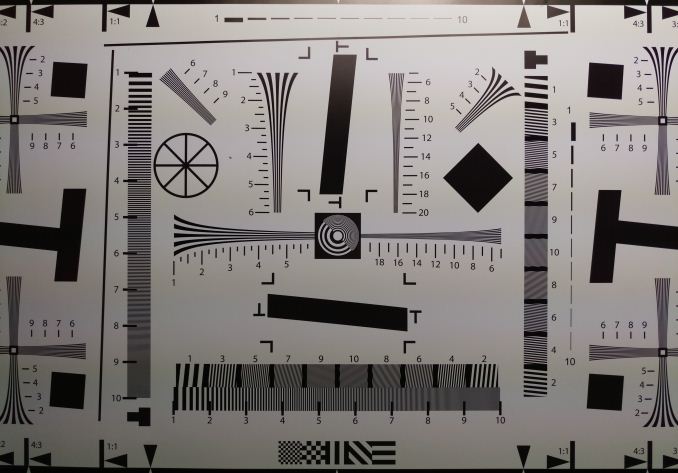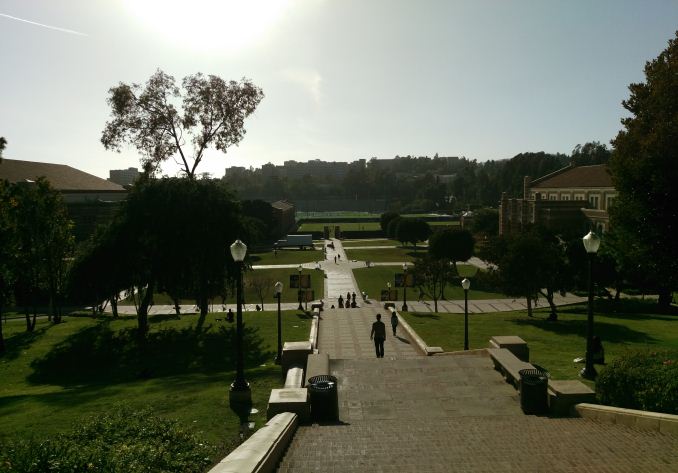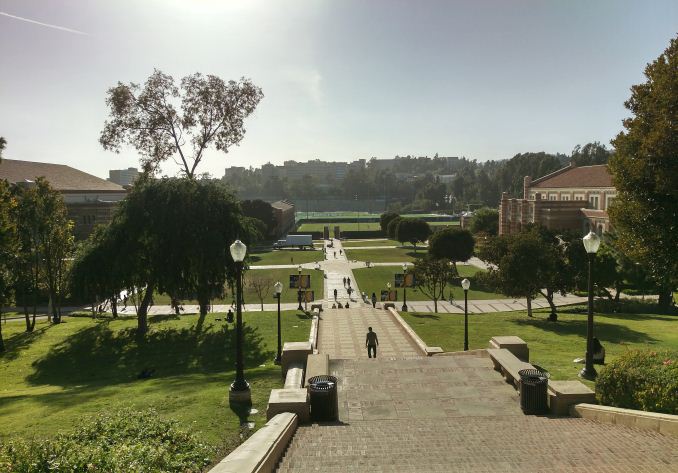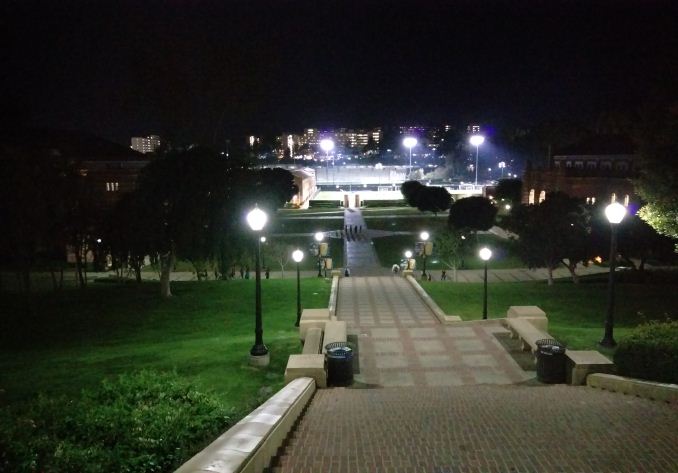The HTC One M9 Review: Part 2
by Joshua Ho on April 6, 2015 10:00 AM EST- Posted in
- Smartphones
- HTC
- Qualcomm
- Mobile
- Snapdragon 810
- One M9
Camera Performance
Now that we've finished going over the camera architecture and user experience of the One M9 we can talk about the end result, namely the quality of the still images and video that the One M9 can produce. Our first test is a basic test of spatial resolution, which uses high-contrast line pairs that make it possible to get a good idea for what the effective maximum resolution of the camera is.
In this test, we can see the benefits of the 20MP camera sensor of the One M9, spatial resolution in this test is a massive improvement over what we saw from the One M8. At the center, the resolution of the camera is sufficient to resolve up to the 20 mark. Resolution at the edges of the frame remains sufficiently high, with no obvious field curvature in this test. To get a more nuanced look of low ISO camera performance, we can look at some standard daytime shots to get a better idea of real-world camera performance.
Here we can start to see some of the real issues with the One M9's camera. It's immediately obvious that the sky here is just the wrong color. Although Los Angeles can be a smoggy place, the sky in this photo should be a stronger shade of blue, not gray with a tinge of blue. Looking at the texture of the roof, the grass throughout the photo, and the bleachers off in the distance, it's pretty obvious that HTC needs to strongly reduce the noise reduction that they're using here, as there's almost no detail in these photos. The detail is basically comparable to the iPhone 6's 8MP camera, which shouldn't be the case in these daytime conditions. The lack of shadow detail also degrades perceived quality. In general, the photo appears to be a bit underexposed as well.
With the HDR mode, all of the issues seen in auto mode are still present. However, to HTC's credit HDR mode is now usable instead of being almost useless as it was with the One M8. HTC still needs to focus on reducing halos as there seem to be issues with this on some high contrast edges/moving objects and make HDR a live preview similar to the Galaxy S5 and S6 camera, but in general this is a dramatic improvement when compared to previous devices.
In low light, the One M9 performs horribly. There's really not much else to be said because there's next to no detail in these photos. Noise reduction has smeared away what detail there was. Despite the fact that the photos have evidence of incredibly strong noise reduction, there's still a lot of noise visible in the image. Thankfully, the color noise of the image is low which makes things better, but for 1600 ISO and 1/9 second exposure time, the output is nothing to talk about.
Moving on the video quality, we can first look at 1080p30 quality. HTC uses a 20Mbps encode rate, using H.264 Baseline for video, and 192Kbps AAC for audio encoding. While the iPhone 6 can serve as a reasonable reference, there are a lot of apparent issues even if one doesn't look to the iPhone 6 for a point of comparison. In general, 1080p video doesn't seem to carry a great deal of detail with it, and it looks like there isn't any kind of video stabilization going on here. The result is that footage is extremely shaky and really kind of disappointing here.
For 1080p60 we can basically see the same story, as the One M9 still has a noticeable lack of detail and there are a lot of problems with camera shake that aren't dampened out. It almost looks like HTC doesn't have any kind of stabilization for video here, which is rather disappointing. The bitrate of 1080p60 footage is also unchanged from the 1080p30 settings, which is a bit curious.
For 720p120 slow motion, HTC does manage to capture real 720p footage instead of upsampled 480p video, and it compares favorably to the iPhone 6 but detail continues to be a problem here. The encoder settings are similar to 1080p30 with its H.264 Baseline setting, but bit rate is reduced to 12.1 Mbps.
Overall, the performance of the One M9's camera is disappointing. Overall, it's still probably better than the One M8's camera, but the execution is lacking. HTC needs to focus on improving detail by avoiding aggressive noise reduction, reduce aggressive sharpening, improve shadow detail, implement effective EIS and OIS, and work on improving auto-focus and capture latency. It's concerning that HTC still cannot come close to the competition in this area, and given that camera is a crucial aspect of any smartphone experience HTC needs to resolve all of these issues if they want to remain relevant in the smartphone market.






































127 Comments
View All Comments
Connoisseur - Wednesday, April 8, 2015 - link
There seems to be a significant difference in size between the Z3 Speakers and the HTC ones. Having never heard a Z3, I'm assuming the HTC ones have more volume to them. I'm not saying it was the right call but squeezing a decent sized speaker in the front would necessitate a larger bezel above to fit the display circuitry. The Z3 speaker looks tiny and seems to take minimal space in comparison. Maybe that's just Sony throwing around it's hardware prowess but the extra bezel, although ugly, makes sense in the HTC case. It's not like they just stuck it there to display their logo.Laxaa - Tuesday, April 7, 2015 - link
The black bar is fine, but my biggest issue is the logo on the front. It just looks out of place.kspirit - Tuesday, April 7, 2015 - link
No, the stereo speakers on this thing make good quality sound because they actually need the hollow space in there to reverberate the sound waves. Otherwise they would shove the screen drivers in there. It's a tradeoff. Deal with it.Dorek - Wednesday, April 8, 2015 - link
Even if the black bar can't be eliminated, it couldn't be that difficult to just make it capacitive buttons instead of a stupid HTC logo.Refuge - Thursday, April 9, 2015 - link
I love the bezel on the bottom It gives me a place to put my thumb without triggering anything on the phone. Giving me a solid grip when passing it around or quickly picking it up on the way out the door.My girlfriends G3 while really nice, frustrates me to no end because she has no hard capacitive buttons, and barely any bezel, I'm constantly poking things on the bottom of her screen when passing the phone around.
MikeMurphy - Monday, April 6, 2015 - link
Am I the only one not concerned with increased performance? Phone these days are plenty powerful. Sell me on a jumbo battery, or health tracking features.jabber - Monday, April 6, 2015 - link
Yeah to be honest I'd be sold on a phone that's another 3-4 mm thicker, so we could have a two day+ battery life and a better lens/sensor system in the phone.I really don't have an issue with a 200g phone.
Refuge - Monday, April 6, 2015 - link
I might reccomend looking at the LG Vista, it is a mid range so very affordable.The screen is gorgeous, and the batter life is extremely impressive. My son has one, and he plays games on it constantly, that battery holds up really well too!
Drumsticks - Monday, April 6, 2015 - link
Thanks for the review. It's a shame to see just how poor the One M9 is. Hopefully the S6 review comes out this week! Will y'all be reviewing the G4 when it comes out?sprockkets - Monday, April 6, 2015 - link
Weird, I thought the Sensation was better in a lot of respects vs. the GS2 phone. Screen comes to mind. Only issue with the Sensation was it was only on Tmobile, and the thunderbolt was a poor phone. Evo was OK I suppose.That comparison was 4 years ago, minor nit there.